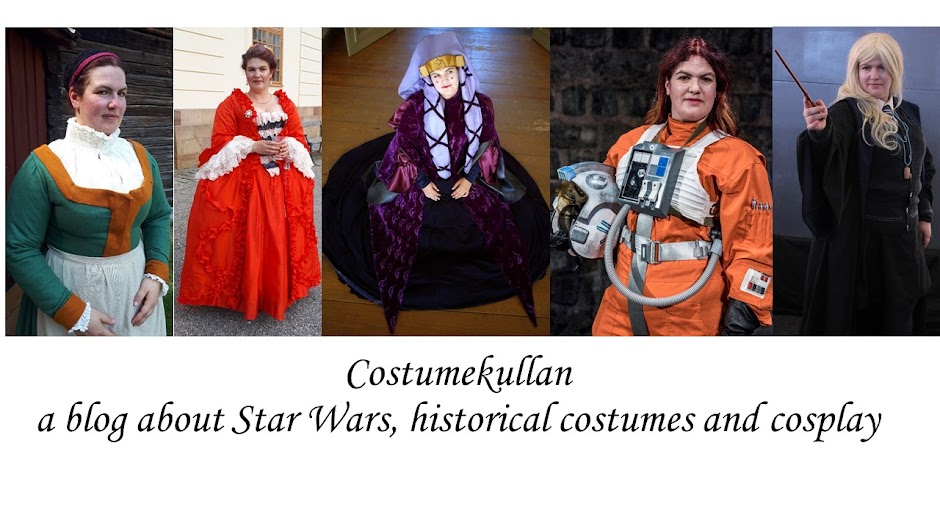Still this weekend I got the chance to do two things. The first was that I invited some friends for a party on Saturday, and everyone should come dressed up/out. In the end it was more like a girls' film night, but it was fun and relaxed. I wore my old printed cotton Anglaise, but before we started to watch a film I slipped into something more comfortable. That's when I discovered that I couldn't get out of the Anglaise by myself. The sleeves were so tight, and with my lost flexibility in one of the shoulders I couldn't wiggle out as I usually do. Thankfully I had friends there who could help me undress. (We also discussed the lack of chambermaids in today's society, and that they wouldn't be satisfied with just room and board if I hired one).
With the problems of getting undressed in mind I set out to finish the sleeves of my pet en l'air. I had already sewn them on before Saturday, but it felt more important than ever to make sure that they are big enough.
For the sleeves I went back to my very first 18th century jacket. It's been long since I threw away the jacket, but before doing that I cut out the lining o the sleeve, since that was a well-fitting sleeve, and the most accurate thing with the jacket.
I used the old sleeve as a pattern, but also added a bit at the bottom to make it longer. The sleeves are unlined and I sewed them together on the machine.
I attached the bottom part by hand, using backstitches. I feel as if I have more control of tricky seams when I sew them by hand, and instead of a faster seam that I might have to rip up and redo I took the slower approach.
The top part was pinned on, and the excess fabric was gathered into a small pleat at the back of the sleeve.
A strap, in the shape of simply a rectangular piece of fabric, was pinned on top of the shoulder lining and sleeve seam. As you can see the strap is bigger than needed, I didn't measure it beforehand but simply folded and cut away fabric until there was just enough to cover all the raw seams. As you can see I'm working on my dressform. Even if I can't fit my 18th century bodices on it, I think it's a lot easier to pin curved shapes, like shoulders, on it, than trying to do it flat on the floor or a table. The strap was topstitched in place with running stitches.
To finish the neckline I added neck binding. It's also strip of fabric that was sewn to the right side of the back and then folded to the inside to hide the raw edge.
This is the finished back of the jacket.
As for the sleeve fit. It was really roomy until I added the neck binding. There must have been enough bulk of the fabric, the cotton that I'm using is very thick, so that the back width has shrunk a bit, and that affects the sleeves. I can get in and out, but I need to be careful about this for my next project, and possibly add a bit to the back to avoid the issue.










